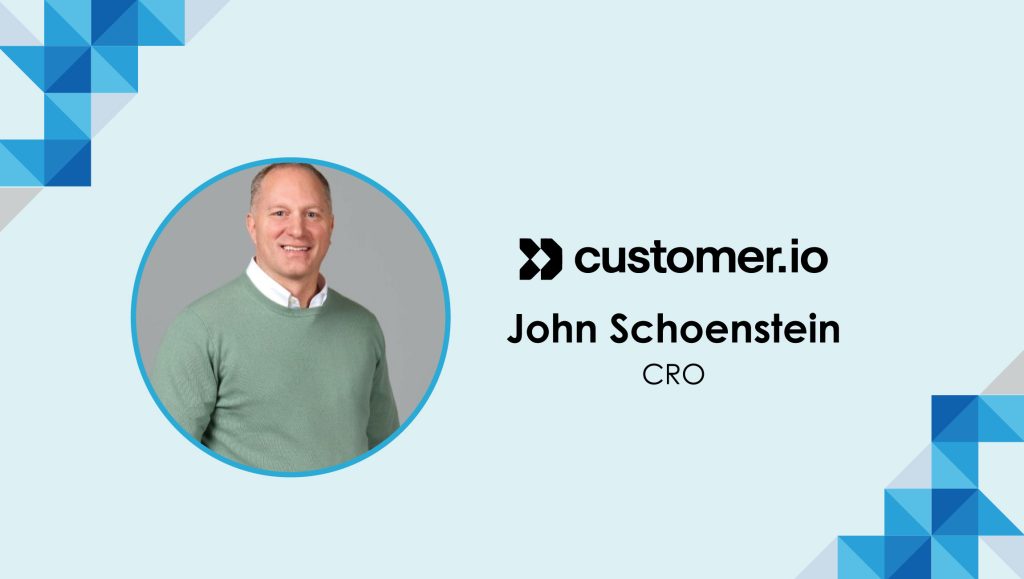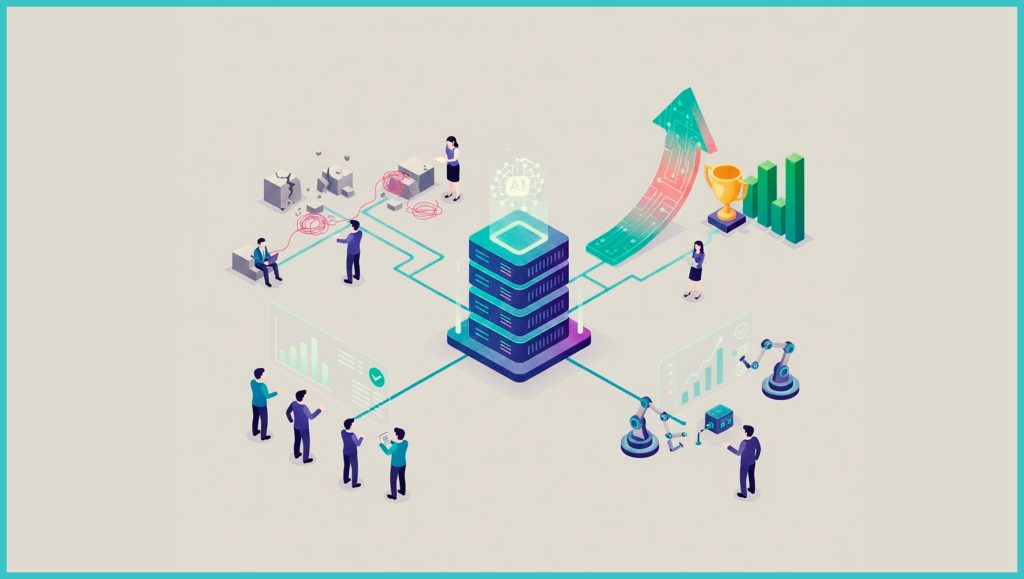John Schoenstein, CRO at Customer.io shares top fundamentals that can enable better sales and process efficiencies among B2B sales teams in this short catch-up with SalesTechstar:
Hi John, tell us about your B2B SaaS journey so far and what you are most excited about as Customer.io’s CRO?
I’ve been fortunate to work at some great companies (both public and private), including Oracle, SurveyMonkey, Amazon, Adobe, and Microsoft, to name a few. Each experience has instilled in me different skills that have uniquely prepared me for this role and have shaped who I am today. When considering my next move, I was looking for a private company with a strong product, excellent product-market fit, solid growth plans, and a robust culture.
Customer.io has had tremendous growth so far, and we have everything needed for even more success. I am very excited about accelerating our growth and bringing even more value to our customers as we make adjustments in our go-to-market strategy, enhance our outbound sales approach, and bring these elements together to provide a more comprehensive customer experience.
As someone who is attuned to leading global sales teams, what fundamentals would you say help collaborate better when in sales across regions: how do you keep the internal alignment in check?
I like to utilize several fundamental principles and strategies to assist global sales teams in collaborating better across regions and maintaining consistency in process alignment. I establish robust communication channels and encourage regular updates to ensure everyone is kept informed and aligned around progress, challenges, and changes. It’s also crucial that teams align with the organization’s goals and use common KPIs to track success — so setting those metrics and objectives is also a priority.
The team’s culture is another lever for alignment. I work to implement cultural training and encourage the sharing of regional best practices to foster mutual respect and understanding among team members (and customers) from different regions.
Consistency in customer interactions is maintained by developing guidelines on response times and escalation procedures and collecting customer feedback for improvement.
Focusing on these fundamentals enhances collaboration, ensures process consistency, and boosts the quality of customer interactions on a global scale.
Can you describe some of the sales strategies you’ve relied on to drive impact and the salestech and revtech you’ve usually deployed to boost outcomes from those strategies?
To ensure a cohesive customer experience, this involves thinking through the entire customer lifecycle and aligning teams appropriately. It requires a robust sales development function, smooth handoffs to account executives, and close collaboration with solutions architects. Having the right sales tech is also important. Salesforce is a key part of our sales tech tool strategy and we put a lot of focus on data management and quality so that we can leverage these insights for more accurate decision-making.
Read More: SalesTechStar Interview with Joseph Rodriguez, CRO at Portnox
What would you say are some of the broken aspects of modern B2B selling?
There are several challenges and inefficiencies that can slow down a sales machine. One of the most important is the partnership between sales and marketing. Misalignment between those teams can lead to inefficiency and customer confusion. Lack of coordination between these teams can lead to inconsistent messaging, poor lead handoffs, and a slowdown in productivity.
Many sales teams also struggle with ineffective lead generation and qualification. Inadequate lead scoring mechanisms lead to missed opportunities and wasted time, as sales teams might focus on leads with low conversion potential.
The last area that I will call out is poor customer onboarding and retention. Ineffective onboarding processes can lead to customer churn because customers might struggle to get the full value from the product.
If you had to share five fundamentals for every CRO in B2B SaaS, what would they be?
- Understand customer needs and pain points. I like to research to understand my target customers’ specific needs, pain points, and business challenges. It’s also important to regularly gather and analyze feedback from existing customers to refine your approach and improve the product offering.
- Forecasting is critical. I recommend taking time to scrutinize the forecast and push your sales leaders to ensure that you deeply understand what is happening in the pipeline and how it will impact your monthly and quarterly results. Being on top of your forecast is the best way to demonstrate that you know your business.
- Establish the right input metrics. If you do, then the results will follow. Sales leaders are not paid for effort; they are paid for results, so it’s critical that they spend their time focusing on the right levers in the business. Sales leaders need to obsess about constantly improving win rates, shortening sales cycles, having higher-quality meetings, reducing initial response time (IRT) to customers, and shortening AE ramp time.
- You need the right talent. You need Account Executives who are hungry, driven, competitive, and accountable. Your front-line managers need to be very disciplined and rigorous in their approach to the business. They need to be motivational coaches while driving strong team accountability.
- Customer experience needs to be integrated between the Marketing, Sales, and Customer Success teams. A successful sales motion starts at the top of the funnel with demand generation, drives through the sales team, and constantly grows with a strong customer success motion. These three teams need to be totally integrated and have aligned goals.
These are the keys to success for any sales leader, and constant improvement in these 5 areas will improve booking results, provide focus for the team, reduce AE churn, and drive more predictability into the forecast process, which is what investors are looking for.
Can you share your thoughts on the future of sales and revenue generation: how will this role and process evolve in the B2B tech segment?
I think AI is the future of revenue generation. Leveraging AI can significantly boost a sales team’s productivity and help optimize sales processes by automating repetitive tasks such as data entry, lead qualification, and appointment scheduling. This leaves more time for sales reps to actually spend time with customers and build better relationships.
Additionally, I see the potential of AI for forecasting, especially the tools that can analyze historical data and market trends to better predict future sales performance accurately. This could help sales managers make informed decisions, allocate resources more efficiently, and set realistic team targets. AI-powered analytics could also help analyze customer interactions to identify potential leads and predict likely conversions, helping sales teams prioritize efforts and work more efficiently.
Read More: Comparative Analysis: Unveiling the Dynamics of CLV and CLR in Maximizing Revenue Growth

Customer.io is a versatile marketing automation tool for sending relevant messages based on behavior across web and mobile products.
John Schoenstein, is CRO at Customer.io
Episode 204 Of The SalesStar Podcast: Website Personalization Best Practices with David Brutman, Chief Product Officer, Co founder of Folloze





















